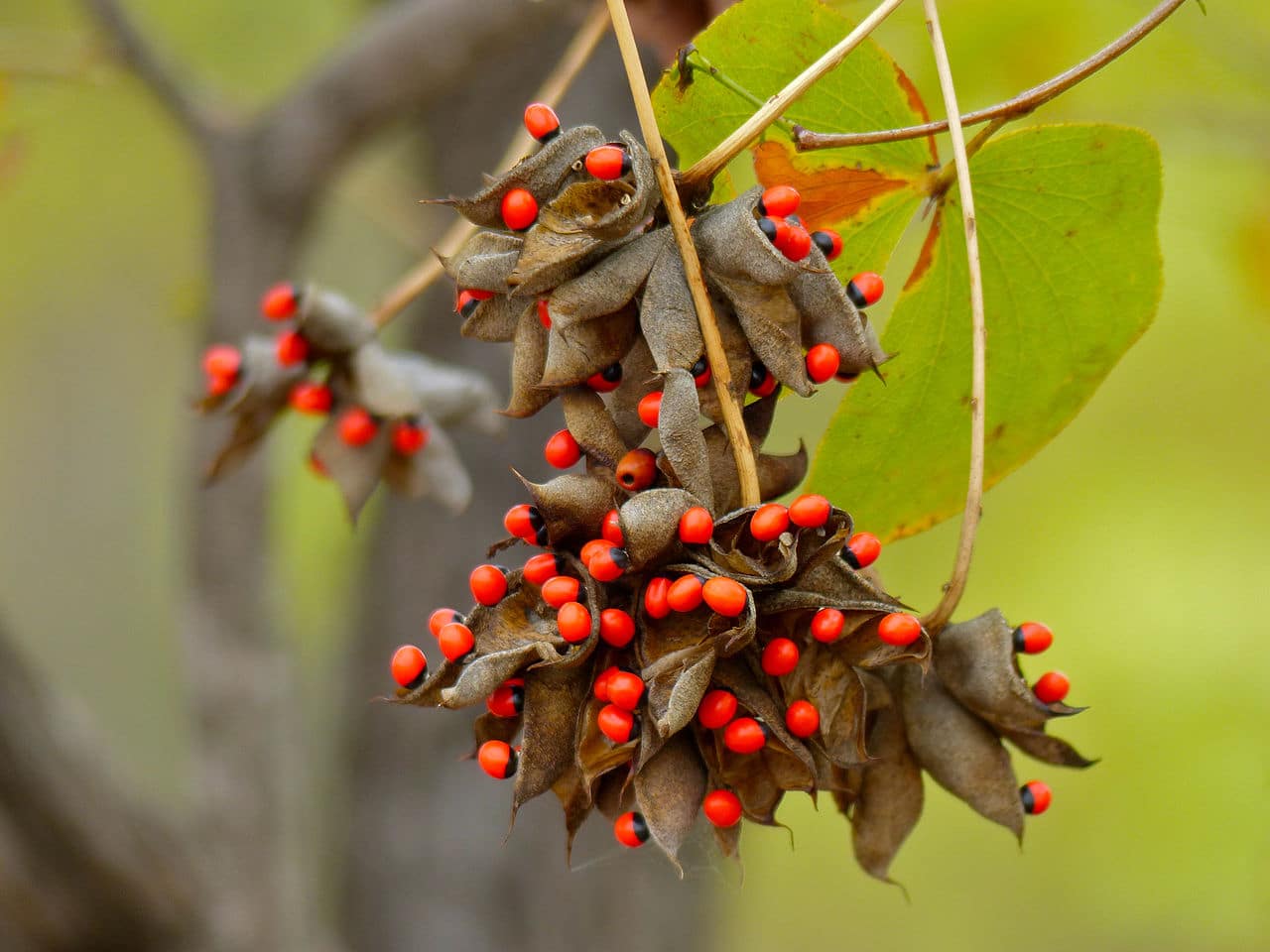
Image - Wikimedia / Bernard DUPONT
In the nature of distant places we can find plants that, when we get to know them, can surprise and worry us in equal parts. One of them is a climber belonging to the group of legumes (Fabaceae family) that has leaves and fruits that, used well, serve to prevent some diseases; but if on the contrary they are manipulated without having sufficient knowledge, they would leave you in the hospital: American licorice.
Should it be forbidden? Well, in Spain it already is. Prevention is better than cure, and given the toxicity of this plant, it is better not to buy seeds anywhere. Let's see how he is abrus precatorius, which is how botanists call our protagonist.
Origin and characteristics of abrus precatorius

American licorice is a perennial climber native to India and Indochina, as well as Africa. It is usually found in mountainous regions, although it also lives on the coast near the beaches. Reaches a height of 5 meters, developing stems that, over time, become woody at their base. The leaves are pinnate, petiolate and alternate, green in color.
The flowers are pink or reddish and are grouped in peduncular clusters 3-8 centimeters long. When pollinated, legumes are produced that contain about eight seeds of about 0,5 millimeters.
What is?

Image - Wikimedia / Vinayaraj
In their places of origin they are used to heal superficial wounds, relieve fever or colds, among others. The leaves are often used with other ingredients, or the roots crushed, in infusions or in decoction.
However, the use that has reached the Old Continent the most is that of its seeds. These are very pretty, so are used to make bracelets or necklaces. But if they are broken they are very dangerous, and can even cause death since they contain lecticin, which causes severe gastroenteritis, confusion and finally coma.
As we said at the beginning, in Spain it is considered a prohibited plant since 2004, which was when it was included in the BOE 32.